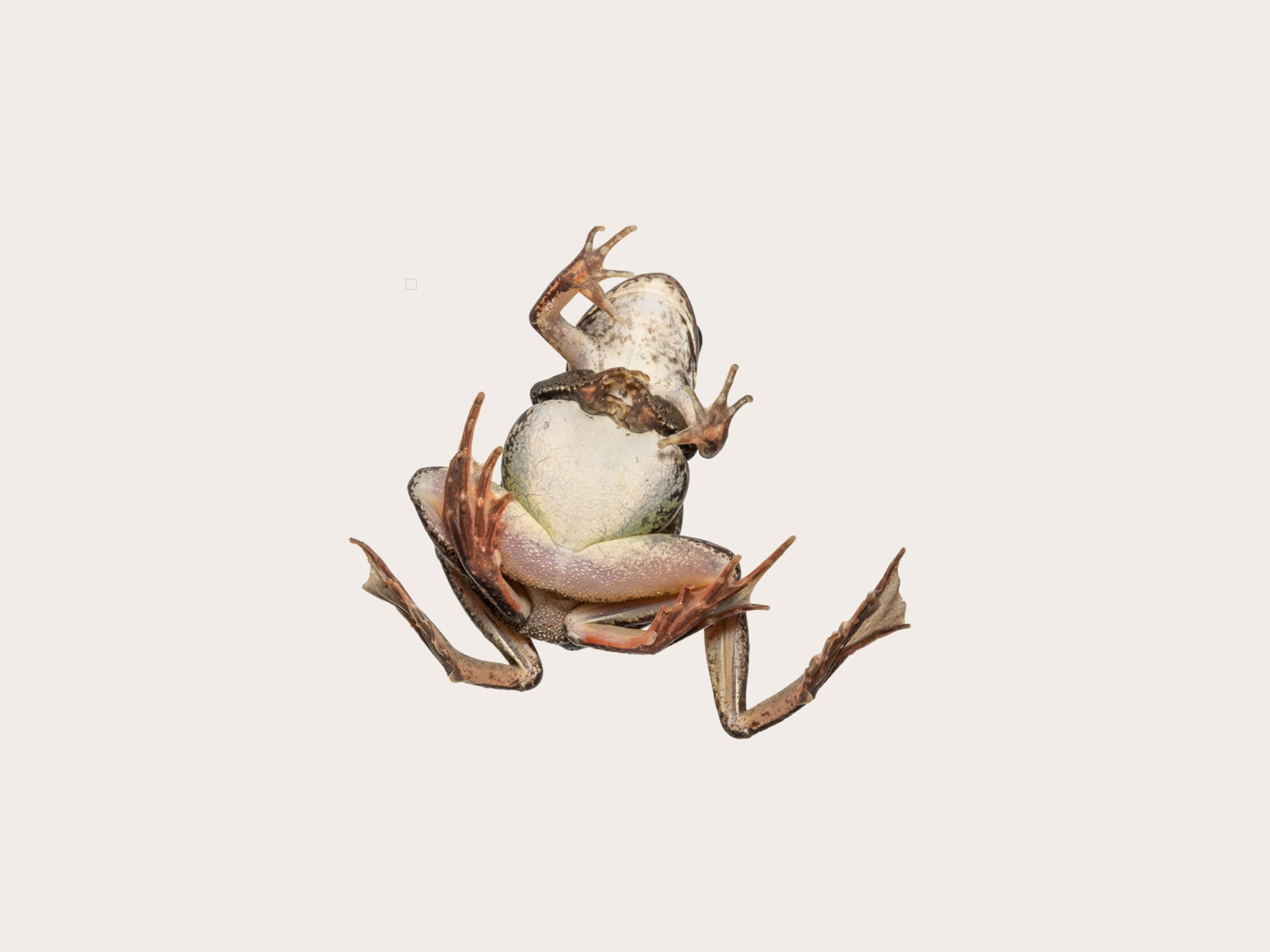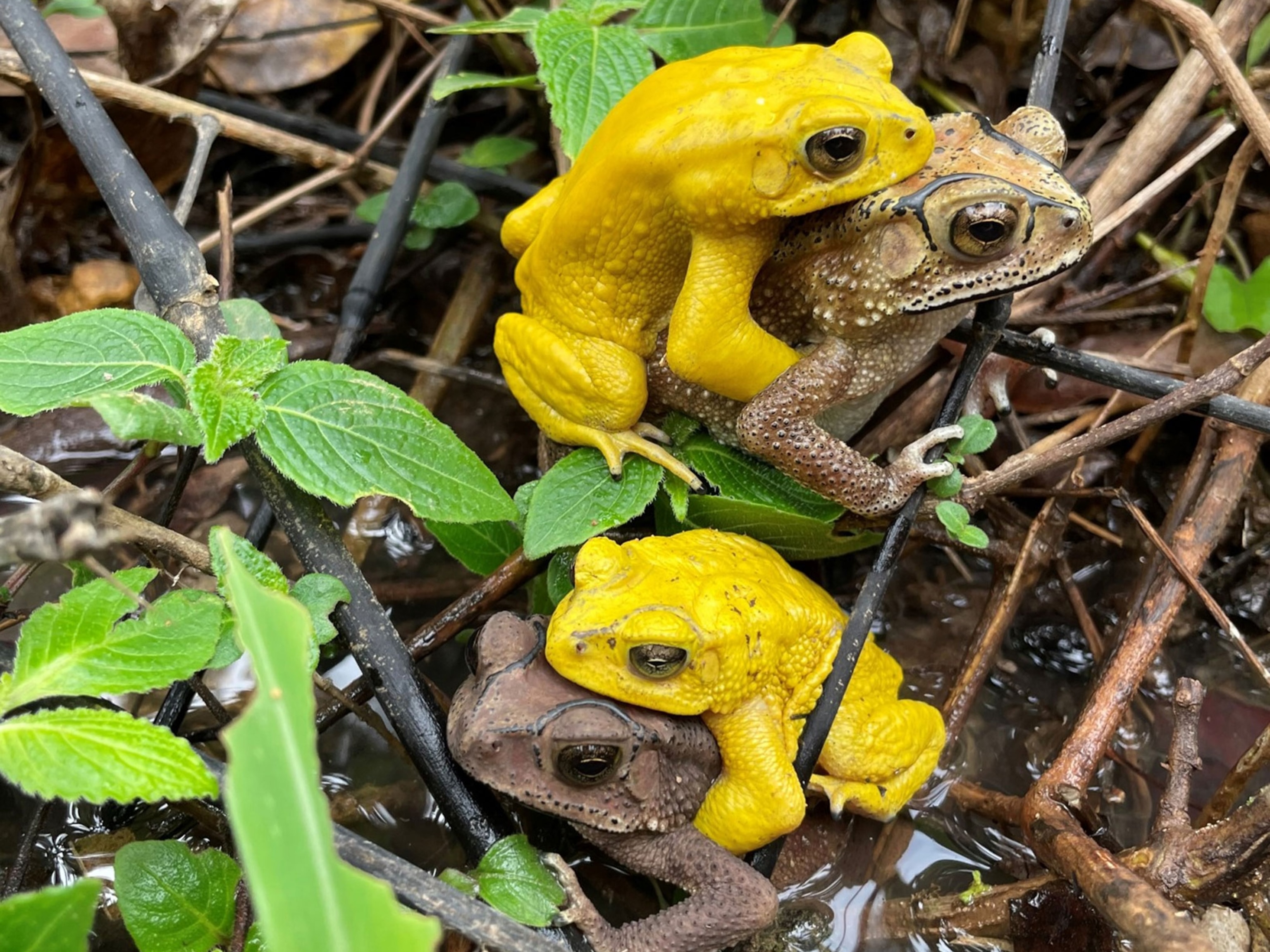
30 Amphibian Species Wiped Out in Panama Forest
Five of the lost species were new to science.
A "catastrophic" epidemic has made 30 amphibian species locally extinct in a region of Panama—including 5 species that were lost before they were even formally identified, a new study says.
The species are the latest victims of the deadly chytrid fungus, which has caused major amphibian declines in Central and South America as well as in Australia since the late 1980s. The fungus infects an amphibian's skin, sloughing off the skin's layers and causing lethargy, weight loss, and eventual death.
Suspecting the imminent arrival of chytrid, researchers had visited the forests of El Copé (see map) between 1998 and 2004 to record genetic information from the region's frog and salamander species.
Chytrid swept through El Copé in 2004, wiping out amphibians so quickly that dead frogs littered the forest floor, according to study leader Andrew Crawford, an evolutionary biologist at the University of the Andes in Bogotá, Colombia.
The mysterious fungus acts so rapidly that scientists are rarely able to track its destruction. (Related: "Deadly Frog Fungus Spreads in Virus-Like Waves.")
But armed with the genetic database, the El Copé team was able to make the first before-and-after comparisons to pinpoint the exact species lost to the fast-moving fungus—including a handful of species that proved to be new to science.
"We're discovering species and losing species at the same time—these two conflicting trends have to clash at some point," Crawford said.
Species Not Gone Globally, But Hope Dim
Before chytrid hit El Copé, Crawford and colleagues had collected DNA samples from 63 frog and salamander species in a 1.5-square-mile (4-square-kilometer) tract of forest. The information was added to a larger genetic database of known amphibians.
By matching unknown specimens with existing genetic lineages, the team discovered 11 unnamed species among those collected in the forest before the outbreak.
A post-epidemic survey conducted between 2006 and 2008 showed that 25 of the 63 species had been lost. Five of the missing species were among the 11 that were new to science.
Another nine species had seen population declines between 85 and 99 percent since the earlier survey, according to the study.
Though the species aren't globally extinct, there's "not much optimism" that amphibians from unaffected areas will recolonize El Copé, Crawford said.
Past experiments—such as in Costa Rica—show that frogs don't bounce back after a chytrid wave comes through. (Read about vanishing amphibians in National Geographic magazine.)
A frogless forest could have reverberations throughout the ecosystem, Crawford added. For one thing, tadpoles are crucial to stream environments, because they munch on moss and algae along stream beds, taking in protein and other nutrients needed by animals higher up the food chain.
Frog Fungus a Hint of What's to Come?
No one knows what sparked the spread of chytrid, but it's possible that globalization—with people and goods becoming more interconnected—is a key factor, Crawford said. (See "Bait Shops Found to Be Spreading Chytrid.")
In general, the outbreak is an "alarming" reminder of how such emerging pathogens can devastate whole ecosystems.
For instance, chytrid is so potent that it's killing off distantly related species of frogs that are as genetically different from each other as rats are from whales, he said.
"Hopefully we don't get pathogens like that that hit mammals," he said. "This could be just one example of what's coming."
The amphibian die-off findings appear this week in the journal Proceedings of the National Academy of Sciences.





